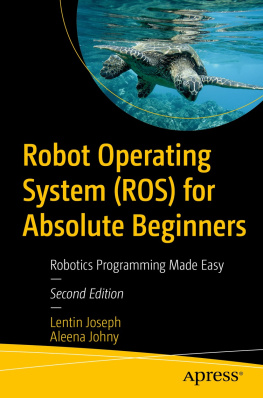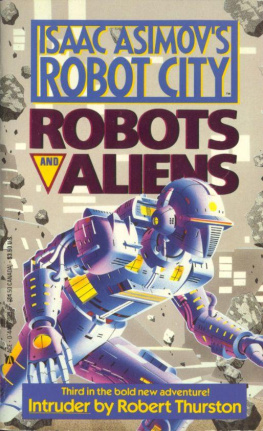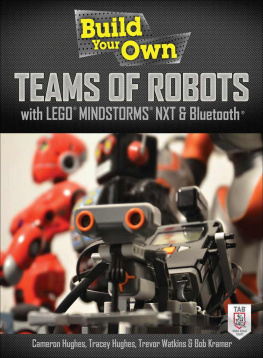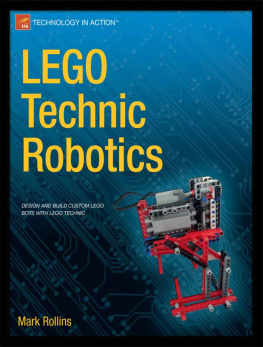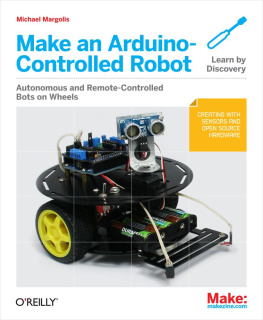
BY THE SAME AUTHOR
HOW TO SURVIVE A ROBOT UPRISING
WHERES MY JETPACK?
Bloomsbury USA
An imprint of Bloomsbury Publishing Plc
| 1385 Broadway | 50 Bedford Square |
| New York | London |
| NY 10018 | WC1B 3DP |
| USA | UK |
www.bloomsbury.com
This electronic edition published in 2018 by Bloomsbury Publishing Plc
BLOOMSBURY and the Diana logo are trademarks of Bloomsbury Publishing Plc
First published 2008
Daniel H. Wilson, 2008
All rights reserved
You may not copy, distribute, transmit, reproduce or otherwise make available this publication (or any part of it) in any form, or by any means (including without limitation electronic, digital, optical, mechanical, photocopying, printing, recording or otherwise), without the prior written permission of the publisher. Any person who does any unauthorised act in relation to this publication may be liable to criminal prosecution and civil claims for damages.
No responsibility for loss caused to any individual or organization acting on or refraining from action as a result of the material in this publication can be accepted by Bloomsbury or the author.
ISBN: 978-1-5969-1281-6 (PB)
ISBN: 978-1-6355-7266-7 (eBook)
LIBRARY OF CONGRESS CATALOGING-IN-PUBLICATION DATA
Wilson, Daniel H. (Daniel Howard), 1978 How to build a robot army: tips on defending planet earth against alien invaders, ninjas, and zombies / Daniel H. Wilson. p. cm. ISBN: 978-1-59691-281-6 (PB) 978-1-63557-266-7(ePub) 1. Robots 2. RobotsHumor I. Title TJ211.W437 2008 629.892dc22 2007060888
24681097531
Bloomsbury books may be purchased for business or promotional use. For information on bulk purchases please contact Macmillan Corporate and Premium Sales Department at specialmarkets@macmillan.com.
To find out more about our authors and their books please visit www.bloomsbury.com where you will find extracts, author interviews and details of forthcoming events, and to be the first to hear about latest releases and special offers, sign up for our newsletters.

FOR
EVAN ADDISON CARPENTER
FROM HIS GODFATHER
HOW TO BUILD A ROBOT ARMY


We all know that robots are bloodthirsty machines bent on wreaking havoc with humankind. But what about all the other menacing creatures that lurk in the shadows? Movie scripts and sci-fi books are bursting at the seams with threats to the human species. Other than robots, humankind is vulnerable to a host of unthinking enemies, including slimy aliens, slinking ninjas, and shambling zombies. Also, great white sharks. And unlike our robotic creations, these monsters cannot be remote-controlled, reprogrammed, or shut down. Vampires lust for our blood, werewolves stalk our children, and rogue asteroids hurtle toward our defenseless planet. To survive, we must look beyond the human-killing potential of robots and see them for what they really are: humankinds most powerful ally in the war against horror.
Consider this: During the coming apocalypse you may not be hit by a massive dose of gamma radiation and turned into an unstoppable mutant killing machine. Instead, in the future fray you will have to rely on your wits and on your limited human physique. In stark contrast to puny people, robots are highly specialized metallic superheroes capable of delivering diesel-powered scissor kicks and launching rocket fists at any time. A well-balanced combination of robots, humans, and slightly robotic humans constitutes our best defense no matter what monstrous foes those caffeine-addled Hollywood screenwriters concoct.
As the enemies of Earth multiply, brave scientists are developing new robot allies to shield our tender human bodies from insensate evil. Cold, hard reality is replacing what was once hot, throbbing science fiction. To that end, leading scientists in academia and industry contributed advice on every section of this book, whether it be mobilizing a team of metal-sheathed robots against zombies, staking out a werewolf-infested forest with auto-guns, or sending an autonomous underwater vehicle to hunt a man-killing great white shark.
In this book you will learn about every aspect of assembling and deploying a devastating robot horde. From weaponizing robotic household appliances to controlling swarms of metallic minions, you will receive step-by-step instructions for selecting appropriate robots, training them to fight, and commanding them in battle. Read this book, gather an army of mechanical mercenaries, and join the fight to protect the human way of life.


In 1956, the world saw its first modern robot, a steel arm dubbed Unimate. The hardworking robot arm was rooted to one spot and was deaf, dumb, and blind. It also revolutionized heavy manufacturing, which now depends on millions of similar arms. Over fifty years later, one simple robot has evolved into thousands of robot varieties. Like in the animal kingdom, different species of robot function best in different environments. But unlike fuzzy animals, robots are also comfortable cruising in outer space, tunneling through radioactive waste, and traipsing through volcanic gases and this is just the beginning...
The unifying framework behind every robot is the sense-think-act paradigm the closed-loop process by which a robot senses the environment, thinks about what to do, and then acts in the physical world. The results of those actions are fed back into the sensing step for an ongoing trial-and-error strategy that is very similar to how we humans interact with the world. The loop requires sensors to gather information, artificial intelligence to decide on a course of action, and end effectors to interact with the environment. An artifact that does anything less is just a glorified remote-controlled car.
Robots are watching, listening, and more using an array of sensors to convert external stimuli into electrical signals. Familiar sensors include cameras, microphones, and touch-sensitive contact switches (often called bumper bars). Some versions of these sensors exceed human capabilities: Infrared cameras can see heat, hydrophones can hear under water, and ultrasonic sensors bounce sound off objects to feel them from afar. Intrinsic sensors like gyroscopes and accelerometers measure gravitational forces so that robots can balance. Other sensors are more foreign: Magnetometers detect the strength and alignment of magnetic fields, laser range-finders spray an area with invisible light and time the return trip of each ray, and chemical sensors smell trace amounts of pollutants from miles away. Robots see a world that is invisible to humankind.









